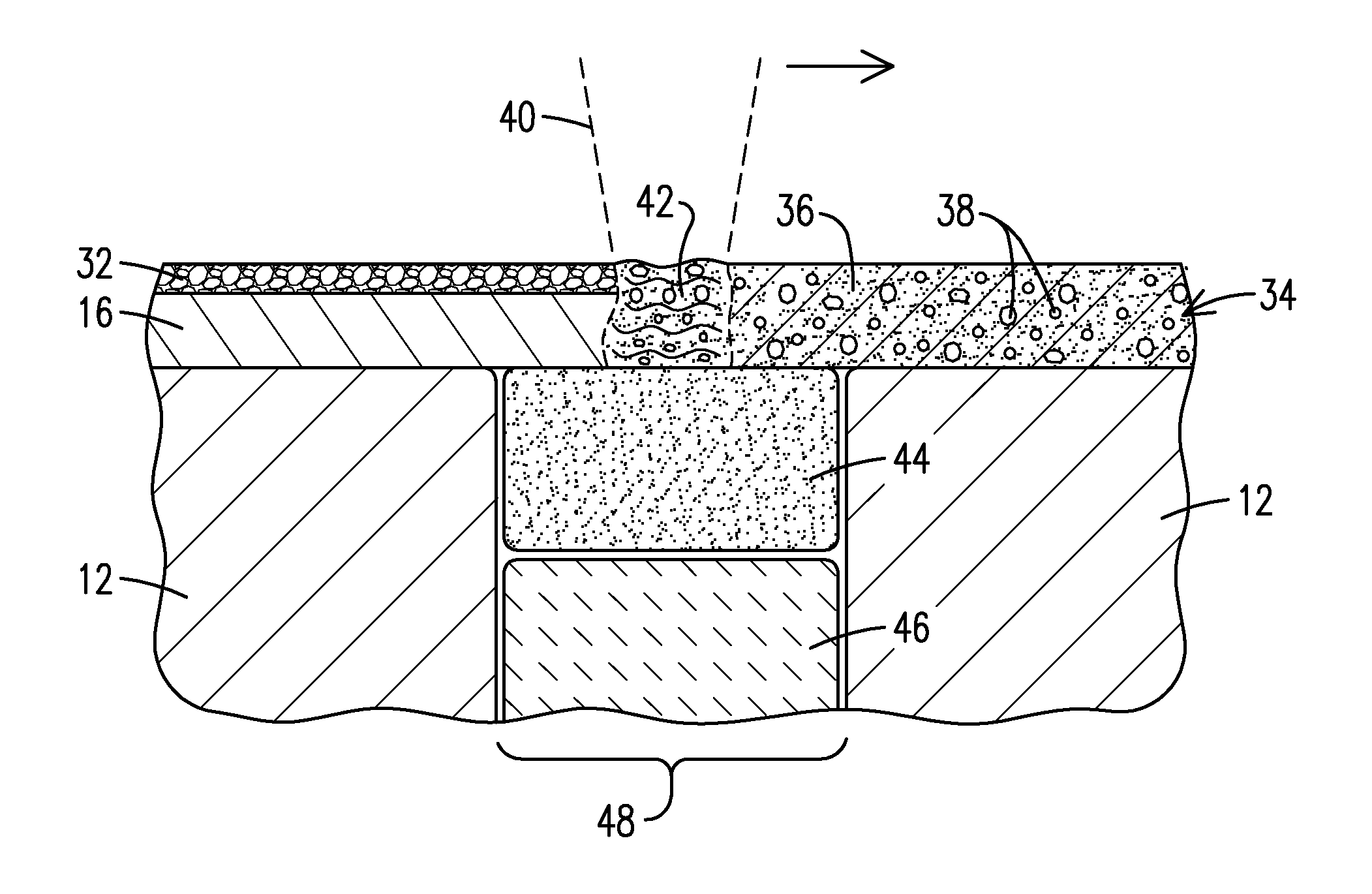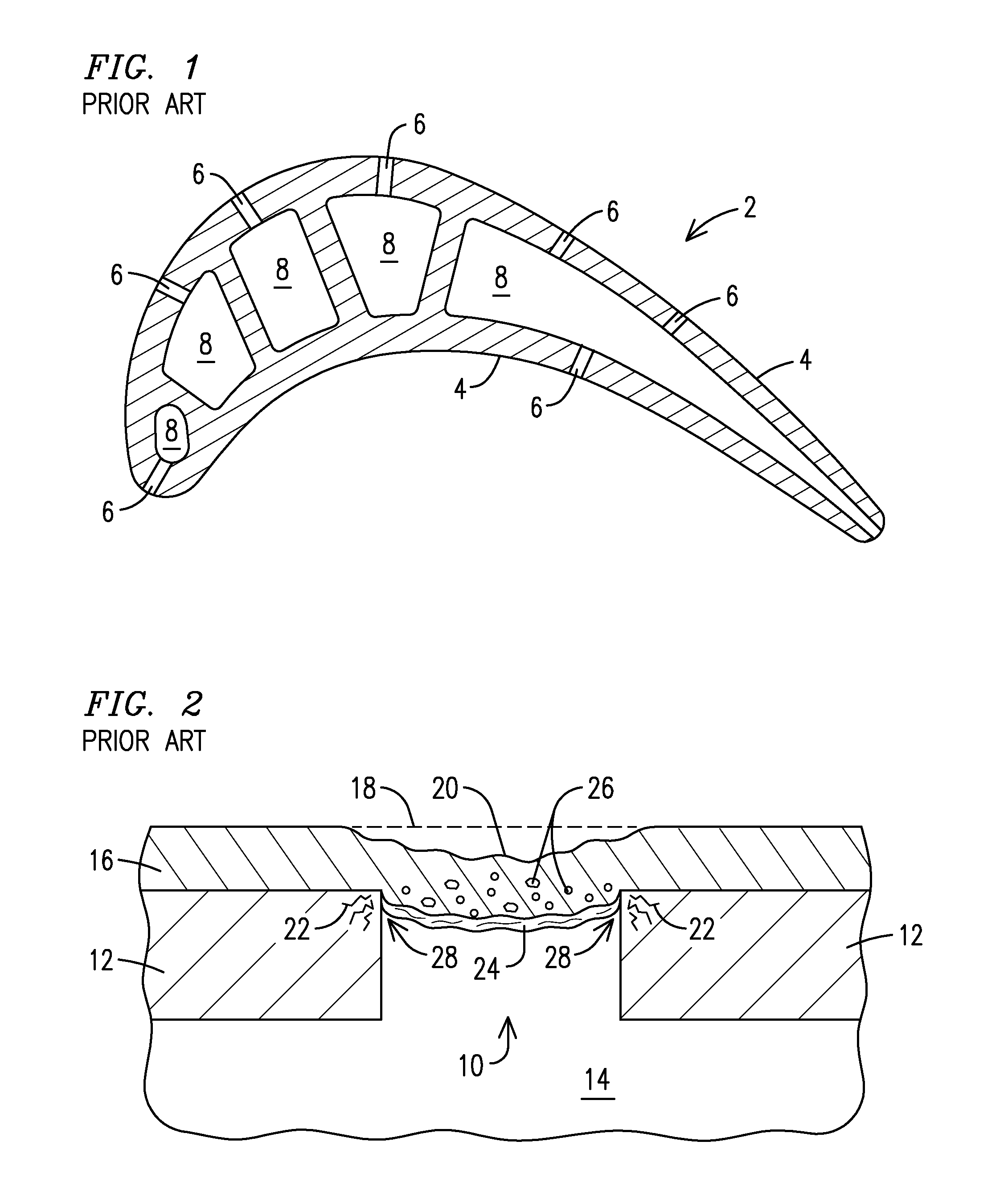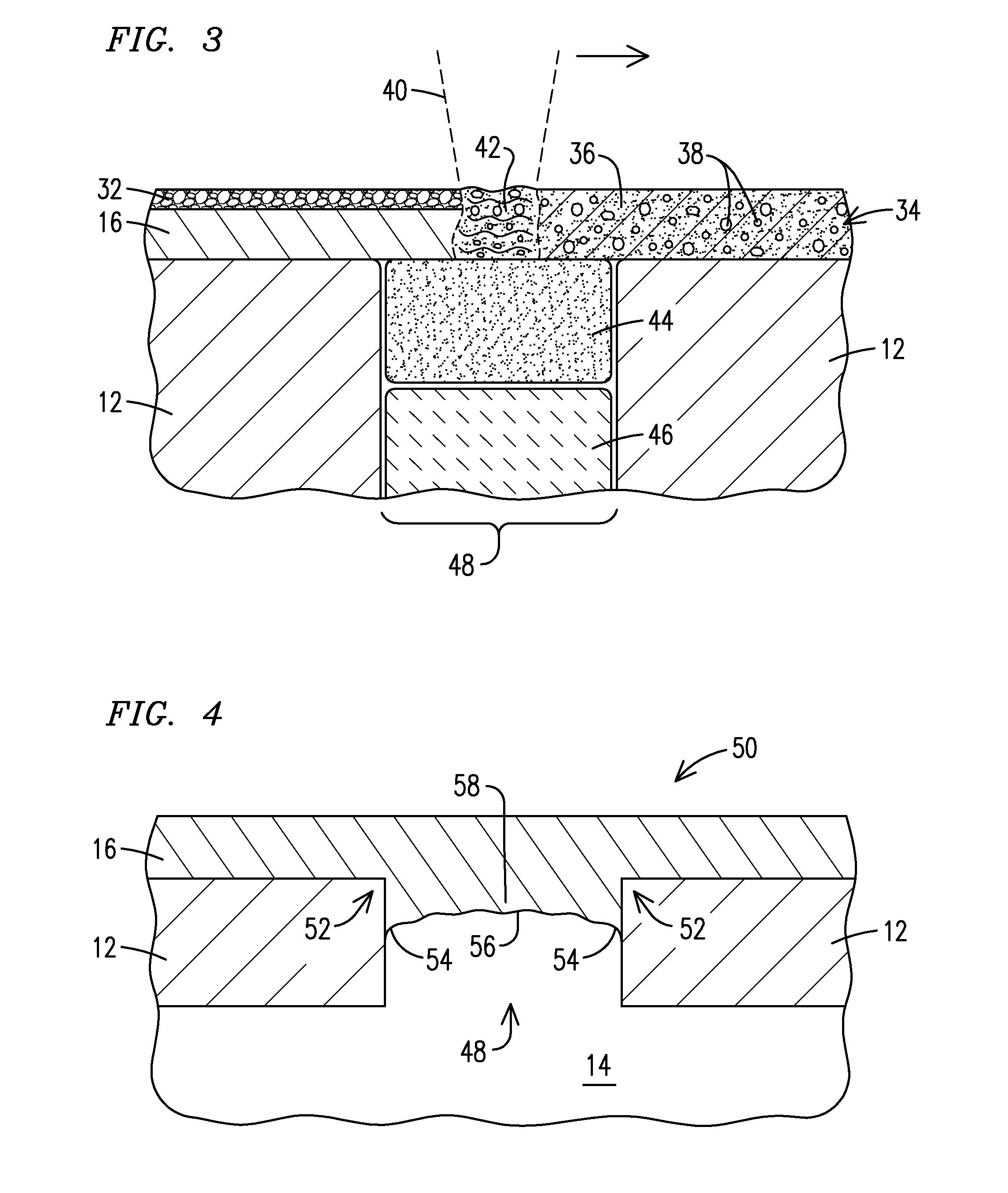Methods and preforms to mask holes and support open-substrate cavities during laser cladding
a technology of laser cladding and masking holes, which is applied in the direction of manufacturing tools, machines/engines, turbines, etc., can solve the problems of compromising the mechanical integrity of the alloy substrate and the cladding layer, unable to maintain the cooling hole free of obstructions and within the design limits of size and shape, and the superalloy materials are among the most difficult to fabricate and repair
- Summary
- Abstract
- Description
- Claims
- Application Information
AI Technical Summary
Benefits of technology
Problems solved by technology
Method used
Image
Examples
Embodiment Construction
[0019]The present inventors have discovered novel methods and materials for forming metallic cladding layers over open cavities and holes located in metallic components. In these disclosures, a protective material is employed which can function as a supportive structure (reducing or preventing a molten metal from entering the open space), a barrier structure (preventing a molten metal from entering the open space and optionally defining the shape of the resulting cladding layer), and as a protective agent (reducing or preventing chemical and / or mechanical imperfections in the resulting cladding layer). Such protective support or blocking materials may exist as individual (standalone) structures, or beds of material, or as multi-layered preform structures constructed of metallic filler-containing compartments and at least one protective supporting compartment. The use of multi-layered preform structures enables the additive manufacture and repair of relatively large, hollow superallo...
PUM
| Property | Measurement | Unit |
|---|---|---|
| Metallic bond | aaaaa | aaaaa |
Abstract
Description
Claims
Application Information
 Login to View More
Login to View More - R&D
- Intellectual Property
- Life Sciences
- Materials
- Tech Scout
- Unparalleled Data Quality
- Higher Quality Content
- 60% Fewer Hallucinations
Browse by: Latest US Patents, China's latest patents, Technical Efficacy Thesaurus, Application Domain, Technology Topic, Popular Technical Reports.
© 2025 PatSnap. All rights reserved.Legal|Privacy policy|Modern Slavery Act Transparency Statement|Sitemap|About US| Contact US: help@patsnap.com



